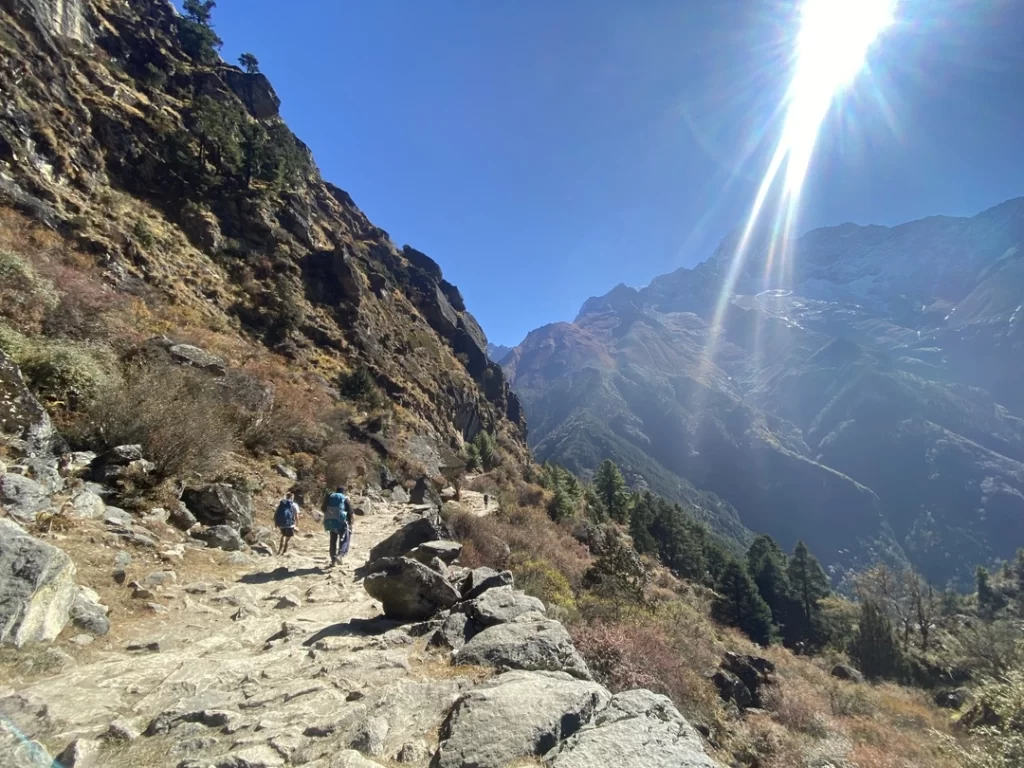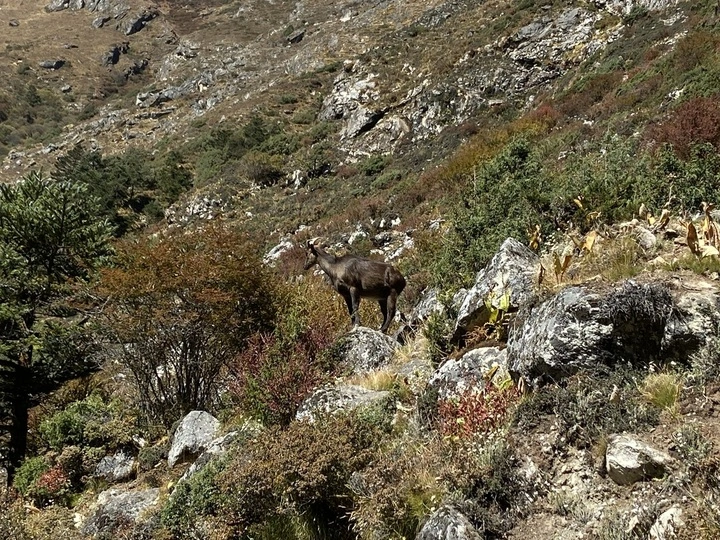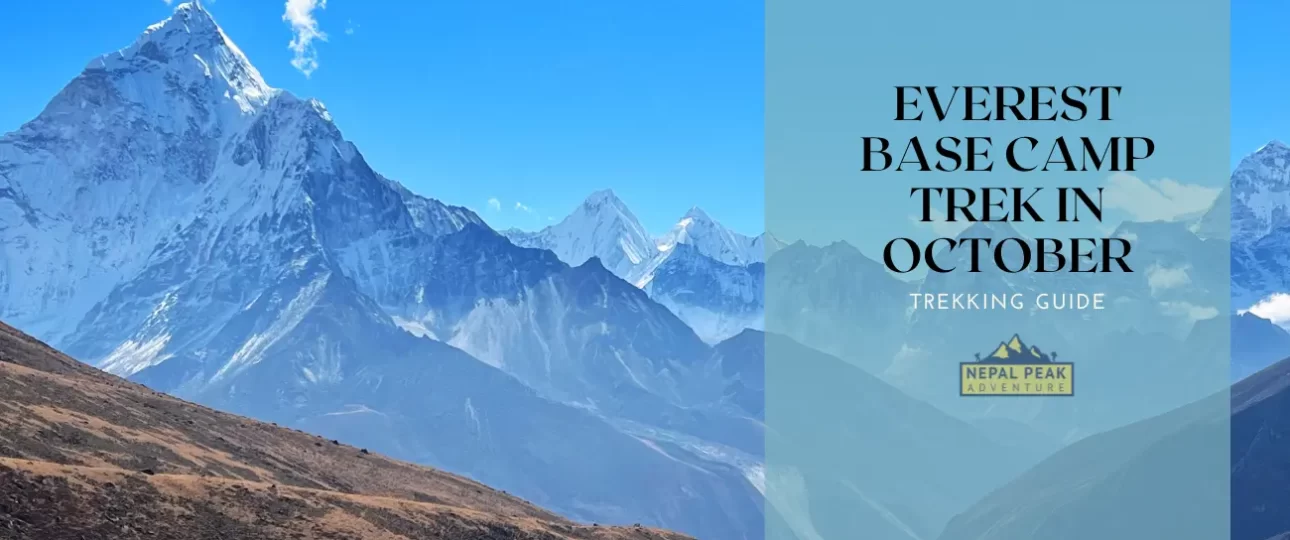Everest Base Camp Trek in October: The Ultimate Guide
Introduction
Embarking on the Everest Base Camp Trek is a dream for many adventure seekers, and choosing the right time of year to undertake this journey can significantly impact the experience. October is widely regarded as the best month for the Everest Base Camp trek, offering trekkers the perfect combination of favorable weather, stunning views, and optimal trail conditions.
In this comprehensive guide, we’ll delve into why October is the ideal time to trek to Everest Base Camp, covering everything from weather and trail conditions to accommodation availability and tips for a successful adventure.
Why October is the Best Month for the Everest Base Camp Trek?
October marks the peak of the trekking season in Nepal, especially for the Everest Base Camp trek. The weather is generally stable, with clear skies that offer breathtaking views of the towering Himalayas. The comfortable temperatures during the day make trekking enjoyable, while cooler nights provide the perfect environment for a good night’s rest.
October falls right after the monsoon season, which means the skies are clear, and the trails are relatively dry. This creates the perfect environment for trekking, as the risk of rain is minimal, and the temperatures are neither too hot nor too cold.
During October, daytime temperatures at lower altitudes range from 12°C to 18°C (54°F to 64°F), making it comfortable for walking. As you ascend, temperatures drop, but the cold is manageable with proper gear. Nights can be chilly, especially at higher altitudes, but the crisp air adds to the overall experience.
One of the biggest draws of trekking in October is the crystal-clear views of the Himalayas. With little to no cloud cover, trekkers are treated to panoramic vistas of iconic peaks like Everest, Lhotse, and Ama Dablam.

Weather in October
The weather in October is one of the main reasons why this month is so popular among trekkers. As the post-monsoon season sets in, the skies clear up, and the weather becomes more predictable, making it easier to plan and execute your trek.
In October, temperatures at lower elevations (up to Namche Bazaar) range between 12°C to 18°C (54°F to 64°F) during the day and drop to around -6°C to -10°C (21°F to 14°F) at night. As you ascend higher, especially above 4,000 meters (13,123 feet), daytime temperatures can drop to around 5°C to 10°C (41°F to 50°F), with nighttime temperatures plummeting to -15°C (5°F) or lower.
Compared to other months, October offers the most stable weather. While September can still experience residual monsoon showers, and November sees the onset of winter, October strikes the perfect balance, offering the best of both worlds.
The stable weather in October not only ensures safe trekking conditions but also enhances the overall experience by providing unobstructed views and manageable trail conditions.
Trail Conditions in October
The trail to Everest Base Camp in October is in its best shape, thanks to the dry post-monsoon weather. Trekkers can expect well-maintained paths and fewer obstacles compared to other months.
All major routes leading to Everest Base Camp are fully accessible in October. The trails are dry, and any damage caused by the monsoon has been repaired, making it easier to navigate the terrain.
While the trek is still challenging due to its altitude and length, the dry and stable weather conditions in October make it easier to traverse the trails. Trekkers won’t have to worry about muddy paths or slippery slopes, which are common in other seasons.
In comparison, the trails can be quite treacherous in the monsoon months of July and August, and the heavy snowfall in December and January can make certain sections impassable. October offers the best trail conditions, with well-trodden paths and minimal hazards.
Availability of Accommodations
With the influx of trekkers in October, it’s crucial to plan your accommodations in advance. The teahouses and lodges along the trail are usually fully operational, but they can fill up quickly.
October sees the full operation of teahouses and lodges along the Everest Base Camp trail. These accommodations range from basic to more comfortable options, providing trekkers with shelter, food, and a warm place to rest.
Due to the popularity of trekking in October, it’s advisable to book your accommodations in advance. This ensures you have a place to stay, especially in the more crowded sections of the trek, such as Namche Bazaar, Lobuche, and Gorak Shep.
In the peak season of October, accommodations can be more expensive and harder to come by. However, the quality and variety of options are better compared to off-peak seasons when many lodges may be closed or offer limited services.
Lukla Flights in October
Lukla, the gateway to Everest, is known for its challenging weather conditions, but October provides the best opportunity for a smooth flight experience.
Flights to Lukla operate from Ramechhap, and October is one of the most reliable months for these flights. The stable weather reduces the likelihood of delays or cancellations, which are common in other months.
The frequency of flights to Lukla is highest in October due to the high demand from trekkers. The weather conditions in October make flights more reliable, with fewer disruptions compared to other times of the year.
To increase your chances of flying out on time, book an early morning flight. The weather in Lukla is generally clearer in the morning, and this is when most flights are scheduled.
More about the Lukla flight in detail.
Difficulty Level of the Trek
The Everest Base Camp trek is known for its challenges, and October is no exception. However, the conditions in October make it one of the best times to tackle these challenges.
The trek is demanding, requiring a good level of fitness and mental fortitude. October’s favorable weather conditions make it easier to cope with these challenges, but trekkers should still be prepared for the altitude and long days of walking.
Start your training at least three months before your trek. Focus on building endurance, strength, and cardiovascular fitness. Acclimatization is key, so plan rest days during your trek to allow your body to adjust to the altitude.
October offers a more manageable trekking experience compared to the harsher conditions of winter or the wet and slippery trails of the monsoon season.

Packing Essentials for October
Packing the right gear is crucial for a successful trek, especially in October when the weather can vary significantly between day and night.
Layering is essential for trekking in October. Start with moisture-wicking base layers, add insulating layers for warmth, and finish with a waterproof and windproof outer layer. Don’t forget a good pair of trekking boots, a warm sleeping bag, and gloves and hats for the cold nights.
While it’s important to be prepared, try to pack as light as possible. Opt for multipurpose clothing, and consider hiring a porter to help carry your load.
In October, you won’t need heavy-duty winter gear, but you should still pack for cold nights at higher altitudes. A good down jacket, thermal underwear, and a quality sleeping bag are essential.
Check out the complete packing list for Everest Base Camp Trek.
Health and Safety Tips
Staying healthy and safe is a top priority on the Everest Base Camp trek, especially when trekking in October.
Altitude sickness is a real concern on the Everest Base Camp trek. To prevent it, take your time to acclimatize, stay hydrated, and avoid alcohol. Consider taking Diamox as a precautionary measure, but consult with your doctor first.
Eat well and drink plenty of water to keep your energy levels up. Bring a basic first aid kit with medications for common ailments like headaches, diarrhea, and blisters.
Know the signs of altitude sickness and be prepared to descend if symptoms worsen. Make sure you have travel insurance that covers high-altitude trekking, and keep emergency contact numbers handy.
Wildlife and Natural Scenery
October is a fantastic time to experience the natural beauty and wildlife of the Everest region.
The post-monsoon season brings the landscape to life, with blooming flowers and lush greenery. You might spot wildlife such as the Himalayan tahr, musk deer, and various bird species along the trail.
October offers a chance to see the region’s flora and fauna at their best. The clear skies also provide stunning views of the Himalayas, making it a photographer’s paradise.
The natural scenery in October is vibrant and full of life, in contrast to the barren landscape of winter or the wet and muddy trails of the monsoon season.

Cultural Experiences
The Everest Base Camp trek is not just about the mountains; it’s also an opportunity to immerse yourself in the local culture.
October is a busy time on the trail, and you’ll have plenty of opportunities to interact with local Sherpa communities. Learn about their way of life, visit monasteries, and gain insight into their rich cultural heritage.
October is the time for the Mani Rimdu festival, a significant event in the Sherpa community. If your trek coincides with this festival, you’ll have the chance to witness traditional dances, rituals, and celebrations.
Visit the Tengboche Monastery, one of the most important cultural sites along the trail. The monastery offers insight into Tibetan Buddhism and provides a spiritual aspect to your trek.
Photography Tips
October’s clear skies and stunning landscapes make it the perfect time for photography.
The viewpoints at Kala Patthar, Namche Bazaar, and Tengboche offer some of the best photo opportunities. Make sure to capture the sunrise over Everest from Kala Patthar for an unforgettable shot.
The lighting in October is excellent for photography, with the early morning and late afternoon providing the best conditions. The clear skies and lack of haze mean you can capture sharp, detailed images of the mountains.
Bring extra batteries, as the cold can drain them quickly. A lightweight tripod is also a good idea for capturing the night sky or time-lapse shots of the mountains.
Cost Considerations
Trekking to Everest Base Camp in October can be more expensive due to the high demand, but it’s possible to manage your budget with careful planning.
Costs for the trek include permits, flights, accommodations, food, and gear. Expect to spend more in October due to peak season prices, but the experience is well worth the investment.
Prices for accommodations and services such as guides and porters are higher in October, but the quality and availability are also better. Booking in advance can help secure better rates.
Consider trekking with a group to share costs, and look for package deals that include permits, accommodations, and flights. Bringing your own gear instead of renting can also save money.
Full Cost Guide to Everest Base Camp Trek
Comparison of October with Other Months
October is often compared to other months for trekking, but it stands out for several reasons.
October offers the best combination of weather, trail conditions, and cultural experiences. While spring (March to May) also offers good weather and beautiful rhododendron blooms, October’s clear skies and moderate temperatures make it the preferred choice for many.
The pros of trekking in October include the stable weather, clear views, and vibrant cultural experiences. The main con is the higher cost and the crowds, but these are outweighed by the overall experience.
October stands out because it offers everything a trekker could want – perfect weather, stunning views, cultural richness, and a well-maintained trail. It’s the ideal time to experience the Everest Base Camp trek in all its glory.
Conclusion
Trekking to Everest Base Camp in October is an unforgettable adventure that offers the best of what the Himalayas have to offer. With perfect weather, clear skies, and vibrant cultural experiences, October is the ideal time to embark on this journey. Whether you’re an experienced trekker or a first-timer, the Everest Base Camp trek in October promises an experience of a lifetime.
EBC Trek in October FAQs
What is the weather like during the Everest Base Camp trek in October?
The weather in October is generally stable, with clear skies and moderate daytime temperatures ranging from 12°C to 18°C at lower altitudes. Nights can be chilly, especially at higher elevations.
Is October a crowded time for the Everest Base Camp trek?
Yes, October is one of the most popular months for trekking to Everest Base Camp, so you can expect larger crowds on the trail and in teahouses.
What should I pack for an October trek to Everest Base Camp?
Pack layered clothing, including moisture-wicking base layers, insulating layers, and a waterproof outer layer. A good sleeping bag, trekking boots, and cold-weather gear are also essential.
How can I prepare physically for the trek in October?
Start training at least three months before your trek. Focus on building endurance, strength, and cardiovascular fitness. Include long hikes with a backpack to simulate trekking conditions.
Are there any special permits required for trekking in October?
No, as usual, you’ll need a Sagarmatha National Park entry permit, a Local Khumbu Municipality, and a Trek Card. These can be obtained in the Lukla counter.



